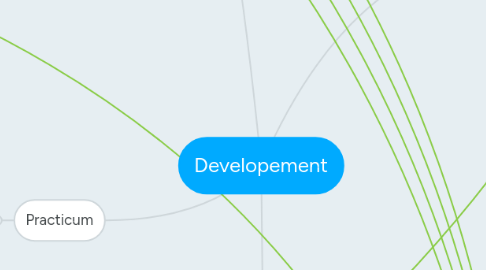
1. Practicum
1.1. Classroom Management
1.1.1. Humanities 9
1.1.1.1. Engagement
1.1.1.1.1. Activities
1.1.1.1.2. Appeal to Pop Culture
1.1.1.1.3. Lecture
1.1.1.1.4. Group Projects
1.1.2. Senior Band
1.1.2.1. Theory
1.1.2.1.1. Scales
1.1.2.2. Reading Music
1.1.2.2.1. Sight Reading
1.1.2.2.2. Articulation
1.1.2.2.3. Dynamics
1.1.2.3. Soloing
1.1.2.3.1. Chords
1.1.2.4. Praciticing
1.1.2.4.1. How to Make it Fun
2. Student Needs
2.1. Have Two Classes at the Same Time
2.1.1. Not All Present at the Same Time
2.1.1.1. More Disorganized
2.2. Student Under Contract with School
2.3. Student Does not Talk in Class
2.4. Learning Dissability
2.4.1. Language Barrier
2.4.2. Autism
2.4.3. Dsylexia
3. Inquiry Question
3.1. Anxiety?
3.2. No Friends in Class
3.3. Lack of Interest
3.4. No Confidence
4. Theories
4.1. Bandura's Social Learning Theory
4.1.1. Environmental Factors
4.1.2. Cognitive Behavior Theory
4.1.2.1. Risk Factors Vs. Protective Factors
4.1.2.2. Benign Violation Theory
4.1.2.2.1. Humor
4.2. Piaget
4.2.1. Four Stages Cognitive Developement
4.2.1.1. Sensorimotor
4.2.1.2. Pre-Operational
4.2.1.3. Concrete Operational
4.2.1.4. Formal Operations
4.2.1.4.1. Puberty
4.3. Freud
4.3.1. Id
4.3.1.1. Birth
4.3.2. Ego
4.3.2.1. 2-3
4.3.3. Super Ego
4.3.3.1. 6-7
4.4. Erikson
4.4.1. Trust vs. Mistrust
4.4.1.1. Birth - 18 months
4.4.1.2. Learn to Trust Caregivers
4.4.2. Autonomy vs. Doubt
4.4.2.1. 18 Months - 3 Years
4.4.2.2. Learns they are Independent of Others
4.4.3. Initiative vs. Guilt
4.4.3.1. 4 - 6
4.4.3.2. Learns to Think Independently
4.4.4. Industry vs. Inferiority
4.4.4.1. 7 - 12
4.4.4.2. Learns to Think About Others
4.4.5. Identity vs. Role Confusion
4.4.5.1. 12 - 18
4.4.5.2. Combines Previous Learning With 'Self'
4.5. Montessori
4.5.1. Montessori Meathod
4.5.1.1. Montessori Schools
5. 5 Stages of Developement
5.1. Prenatal
5.2. Infancy (Birth - 2 Years)
5.3. Early Childhood (2-6)
5.4. Middle Childhood (6-11)
5.5. Adolescence (11- Early 20s)
6. Classes
6.1. Math
6.1.1. Aboriginal Math Connections/Math in Our World
6.1.2. Scaffolding
6.1.3. Presentation techniques
6.1.4. Cooperative Learning
6.1.5. Problem Solving
6.1.6. Professionalism
6.1.7. Differentiated Instruction
6.1.8. Communication
6.2. Language Arts
6.2.1. Assessment
6.2.1.1. Summative
6.2.1.1.1. Tests
6.2.1.1.2. Final Projects
6.2.1.2. Formative
6.2.1.2.1. Asking questions
6.2.1.2.2. Labs
6.2.1.2.3. Group Discussions
6.2.2. Literacy
6.2.2.1. Cultural
6.2.2.2. Progressive
6.2.2.3. Functional
6.2.2.4. Critical
6.2.3. Pre-reading
6.2.4. Jigsaw
6.2.5. Intertextuality
6.3. Science
6.3.1. Teaching Strategies
6.3.1.1. Direct Teaching
6.3.1.2. Using Technology Effectively
6.3.1.3. Field Studies
6.3.1.4. Creative Thinking
6.3.1.5. Guided Discovery
6.3.1.6. Demonstrations
6.3.1.7. Learning Centers
6.3.2. Unit Planning
6.3.3. Classification
6.3.4. Lesson Critique
6.4. Tech
6.4.1. Blended Learning
6.4.2. Gamification
6.4.3. Debates
6.4.4. Critical Challenge Questions
6.5. Art
6.5.1. Multicultrualism
6.5.2. Elements of Art
6.5.2.1. Shade
6.5.2.2. Colour
6.5.2.3. Texture
6.5.2.4. Shape
6.5.2.5. Form
6.5.2.6. Space
6.5.2.7. Value
6.5.3. Artistic abilities
6.6. Principles of Teaching
6.6.1. Lesson Planning
6.6.2. Types of Learning
6.6.3. Inquiry
6.6.3.1. Developing Interests
6.6.3.2. Student Focus
6.6.4. Learning Styles
6.6.5. Questions
6.6.6. Blooms Cognitive Domain
